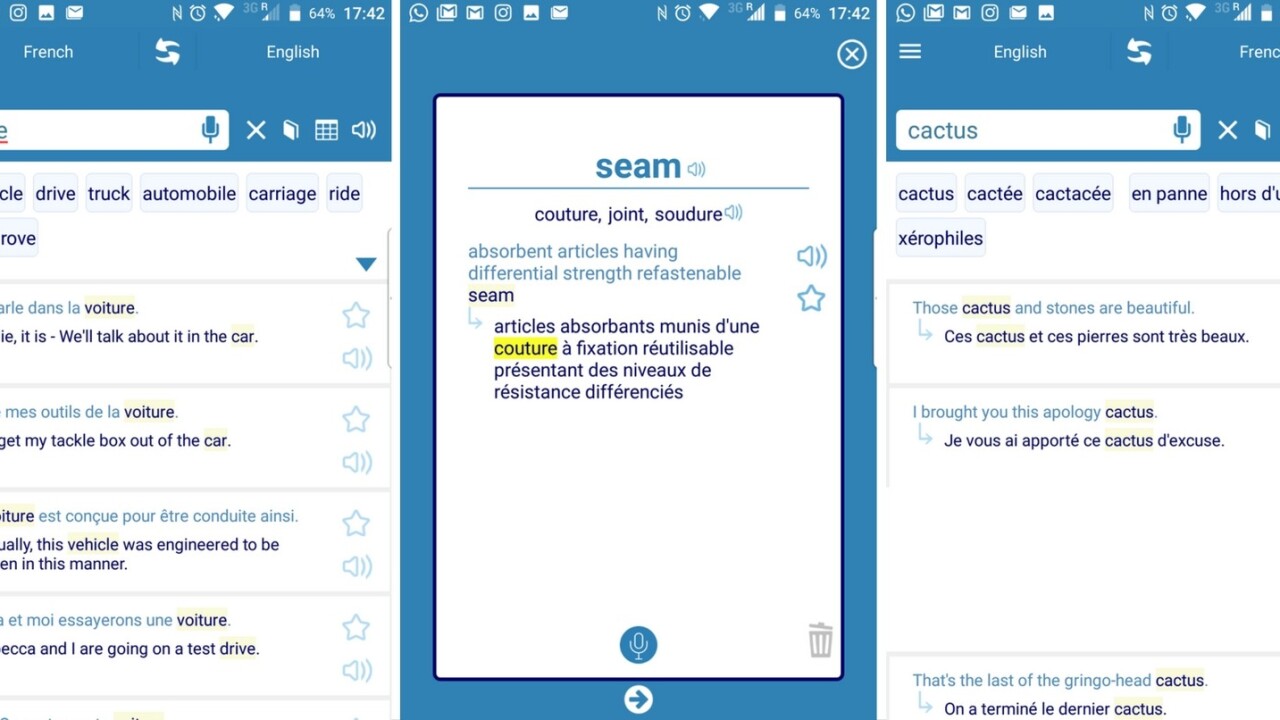
Learning a language is hard. Schools, in particular, are especially bad at teaching them. If you’re just reciting verb conjugations, and learning words and phrases that don’t interest you, you won’t make any progress.
Over the past few years, there’s been several interesting efforts to fix this using technology. The most widely known is, of course, Duolingo, although other notable efforts include Babbel and Memrise.
Now, we can add another product to the list: Reverso Context. This app is available for Android and iOS, and today reached its 7.0 version milestone.
Reverso is vastly more flexible than its most widely known rival, Duolingo. While Duolingo forces you into learning through a pre-defined workflow, and Reverso is much more open-ended.
Essentially, you’ll start by searching for the words you want to learn. Reverso will then show you the translation, along with the relevant synonyms. It doesn’t just source them from the dictionary, as it contains colloquial equivalents.

According to company founder Theo Hoffenberg, the site boasts a dataset of 25 billion words. These are in a variety of widely-spoken European languages — like French, German, Polish, and Spanish — as well as Russian, Arabic, and Hebrew.
Reverso also lets you search for idiomatic phrases. That’s important because all languages — English, French, whatever — are inherently idiomatic. So, example, if you search for “hang out,” it won’t directly translate it. Instead, it’ll return phrases that describe spending time with friends.

Another unique selling point of Reverso is that, in addition to translations, it also shows you sample texts that use use the term or phrase. It sources these from books, films, and official documents. This gives you context, and show how you can use it. As Theo Hoffenberg explained, “the focus is on seamless learning with the app. Examples help you memorize much better.”
To reinforce the learning process, Reverso also automatically generates flashcards based on the words you’ve searched for. These include the word, the translation, and the context in which it is used. The app will also read it out to you, using voice-to-text.
If you find a particular word or phrase useful, you can save it for later use. Which is pretty helpful if you’re on a long flight somewhere, and you want to practice the local lingo.

You can download Reverso Context today, on iOS and Android. While it’s certainly no substitute for the structured approach of Duolingo, it’s not trying to be. Instead, it compliments it perfectly, and allows you to pursue the aspects of a language you’re interested in.
Get the TNW newsletter
Get the most important tech news in your inbox each week.





